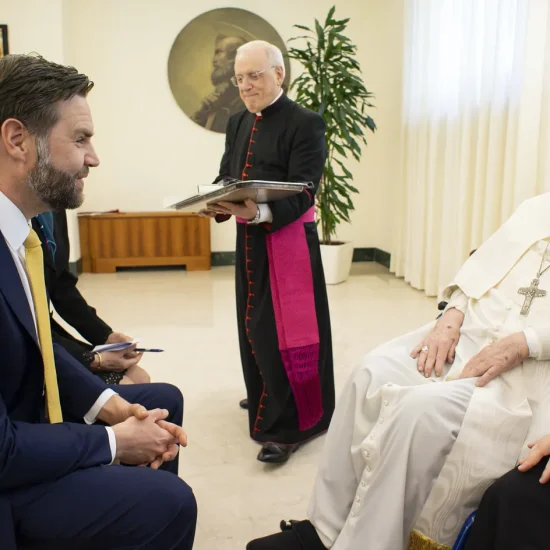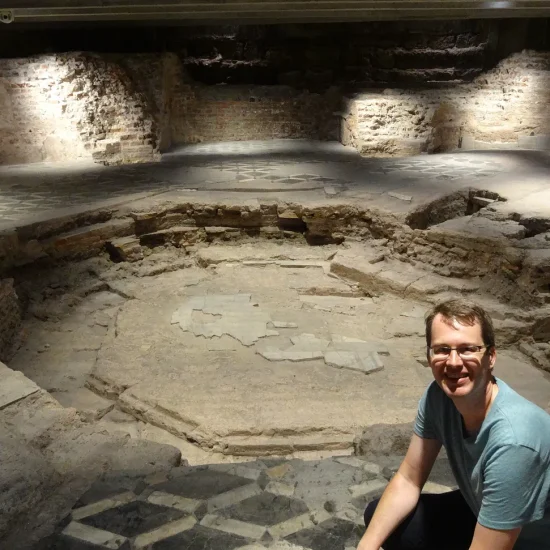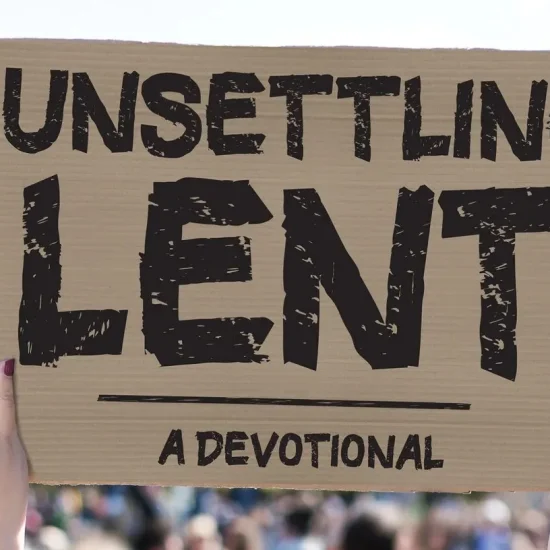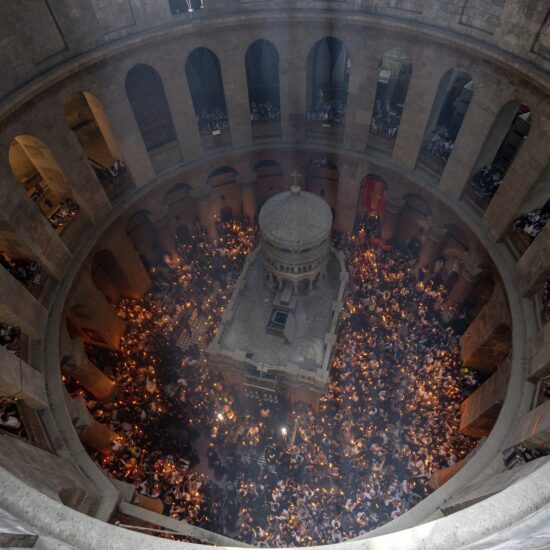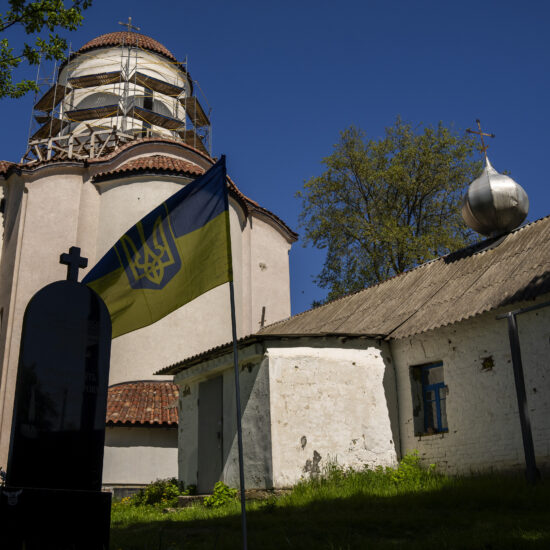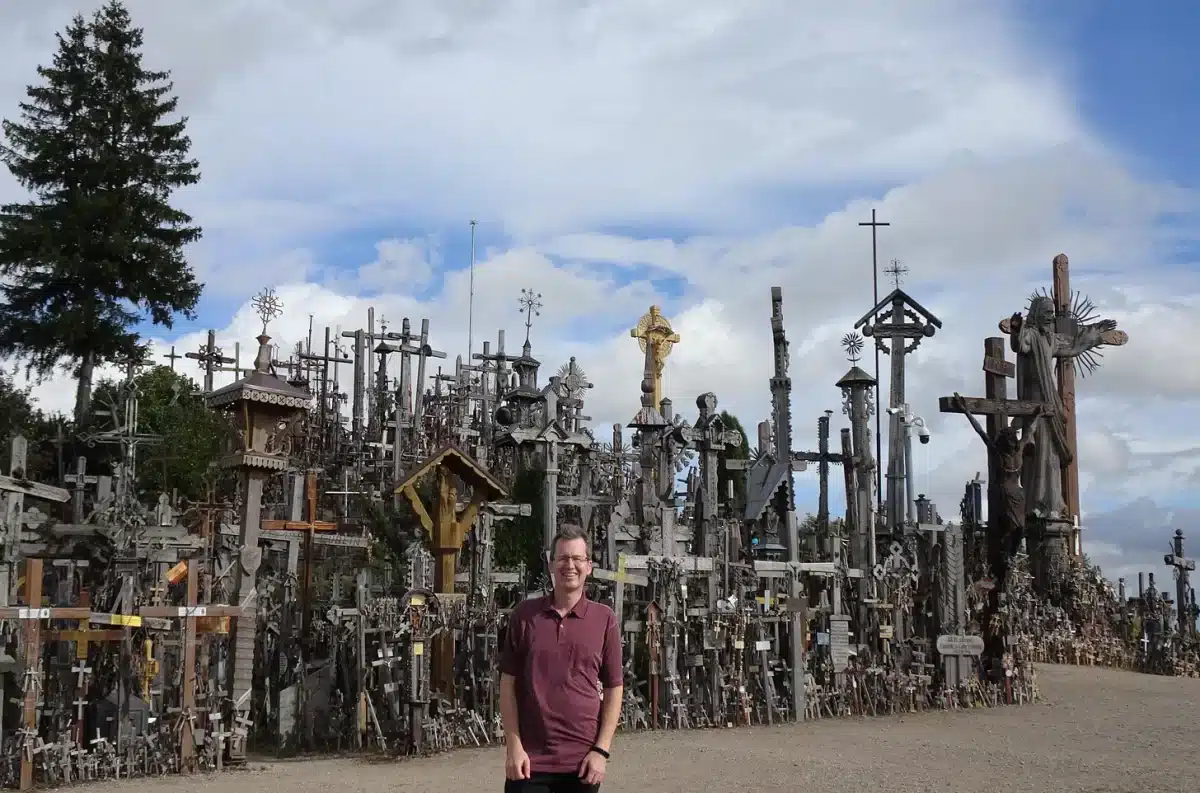
On a hill far away in Lithuania, one can see more than 100,000 crosses cramped together. And it’s not even a big hill. It covers about the width of a football field but lengthwise would only stretch about 65 yards. And it doesn’t rise very high, though it does stand out amid farm fields in the flat Baltic country.
I visited the hill last fall during a trip for the European Baptist Federation meeting in neighboring Latvia. I trekked out of the way not for the novelty of the hill but for the history. This isn’t some artificial tourist gimmick — like the “world’s largest ball of twine” — created just to get people to visit. There’s a deeper religious and political story behind the Hill of Crosses.
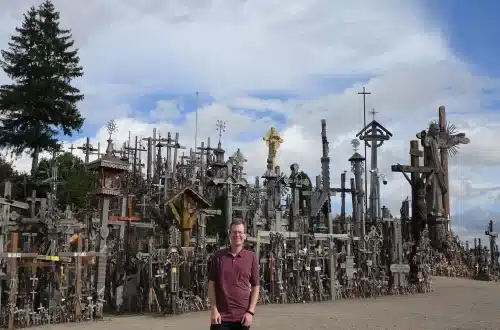
Brian Kaylor at the Hill of Crosses in Lithuania on Sept. 17, 2022. (Jennifer Kaylor/Word&Way)
The precise start of people putting crosses on this hill is uncertain, but many believe some were first placed at the site of a former fort after the failed 1831 uprising as Polish, Lithuanian, and other peoples in the region rebelled against Russian rule. For grieving family members who couldn’t find the remains of their loved ones, the hill became a place to remember them. In a land with a strong Catholic faith, the hill also became a place to remember loved ones who fell in other uprisings and battles, including the 1918 independence war that led to the nation of Lithuania. Freedom, however, lived for only a generation.
Caught between the imperial ambitions of Nazi Germany and the Soviet Union, Lithuania found itself under the thumb of the latter in 1940. And like much of Eastern Europe, that occupation would continue for a half-century. And that’s when the Hill of Crosses gained greater significance.
With the atheistic Soviets imposing heavy restrictions on religious practices and expressions, putting up a cross somewhere signaled not only religious devotion but also political resistance. So people started sneaking over to that hill to erect more crosses. And more. And more.
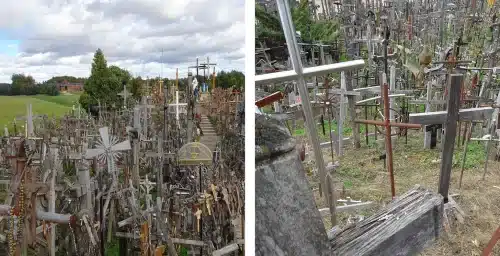
Hill of Crosses in Lithuania. (Brian Kaylor/Word&Way)
Estimates on the number of crosses at various points before the Soviet era show some fluctuation, perhaps due to poor counting or some wooden crosses degrading in the weather or Orthodox Christians from Russia removing Latin crosses of the Catholic Lithuanians. But the estimates show a clear difference from the first half of the 20th century to the time of Soviet occupation.
In 1900, an estimated 130 crosses were present. By 1938, it was put at just over 400. But as the Soviets restricted religious expressions in the late 1950s, the number of crosses exploded — so much so that Soviet officials actually bulldozed crosses on the hill. And that’s when we realize the level of religious-political resistance. On April 5, 1961 — three days after Easter — the Soviets destroyed about 5,000 crosses on the hill. They burned the wooden ones, melted the metal ones, and banned the placing of new crosses there.
But the crosses came back. So the Soviets destroyed many more crosses on multiple occasions, including annual demolitions in the mid-1970s — one at Christmas time — with hundreds of crosses removed each year. Officials even considered a plan to dam a river to flood over the hill. But people kept bringing crosses despite the threats of arrest or other punishments, so the authorities eventually gave up. When Lithuania regained its independence in 1990, there were an estimated 55,000 crosses on this small hill.
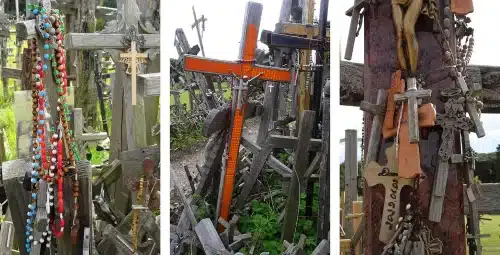
Hill of Crosses in Lithuania. (Brian Kaylor/Word&Way)
In the years since religious freedom returned to Lithuania, the Hill of Crosses has become a pilgrimage site for Catholics and other Christians. Pope John Paul II visited in 1993 and a led Mass nearby.
“Sons and daughters of your country have been carrying to this hill crosses, akin to that of Golgotha, which saw our Savior’s death,” he said. “Climb the hill and remember all the sons and daughters of this country who were sentenced, put into prisons, sent to concentration camps, exiled to Siberia or Kolyma, or put to death.”
As John Paul II noted, the Soviet brutality left its mark on the Lithuanian people. Hundreds of thousands of people were deported in the 1940s and 1950s, many never seen again. Thousands upon thousands more were jailed, tortured, or murdered, often because of their political or religious beliefs.

Hill of Crosses in Lithuania. (Brian Kaylor/Word&Way)
The political role that the cross played as a symbol during Soviet occupation does not diminish its religious significance. But such political implications cannot be ignored.
“This was the place of anonymous but surprising persistence to the regime,” explained Eugenijus Bartulis, bishop of the Roman Catholic Diocese of Šiauliai that includes the Hill of Crosses. “The Soviet government considered the crosses and the hill a hostile and harmful symbol.”
Similarly, Milda B. Richardson, a Lithuanian professor of architecture at Northeastern University in Massachusetts, noted in Architecture and Armed Conflict: The Politics of Destruction that the Soviets recognized the Hill’s “power as a landscape of resistance” as the crosses and other religious symbols became “emblematic of resistance to occupation.” She added that the hill and other wayside shrines in Lithuania served as important sites for the people “to resist and blunt” the rule of Soviets and that by using such places “as a means of reasserting collective identity in the face of oppression and cultural destruction, Lithuanians made these structures an instrument of liberation from enslavement.”
Get cutting-edge reporting and analysis like this in your inbox every week by subscribing today!
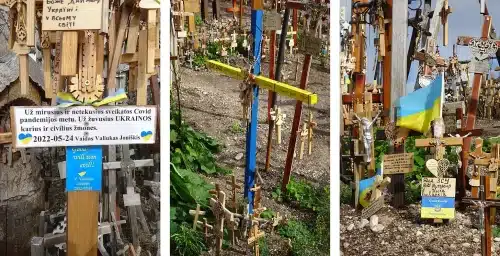
Ukrainian symbols at the Hill of Crosses amid the Russian war on that nation. (Brian Kaylor/Word&Way)
Even since the end of Soviet occupation, oppressed people see that Lithuanian hill — and the cross in general — as a symbol of hope amid death, a promise of freedom amid authoritarian attacks. In 2019, a controversy erupted after a Chinese tourist removed a cross with a message of support for the Hong Kong pro-democracy movement. The woman saw the cross as a threat to the regime she backed. And when I visited last fall, several crosses included Ukrainian flags, ribbons, or messages as people expressed solidarity with the nation under attack from an invading Russian empire.
With these crosses, the Hill of Crosses still today offers a reminder of the subversive power of the cross. The cross was supposed to be how the Roman Empire ended the messianic movement of Jesus. The cross was supposed to prove him to be a loser since the officials believed that “might makes right.” The cross was supposed to show that there is no king but Caesar.
But through the cross and the resurrection, Jesus disarmed the powers and authorities, making a public spectacle of them as he triumphed over them. Jesus proved that death didn’t have the final word, that the empire wasn’t the final authority, that freedom would come, that justice would prevail, that hope is not in vain. And that’s very good news — unless you’re the empire.
As a public witness,
Brian Kaylor

Hill of Crosses in Lithuania. (Jennifer Kaylor/Word&Way)

